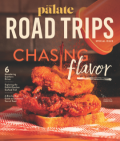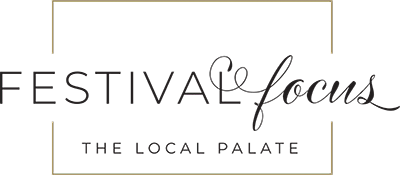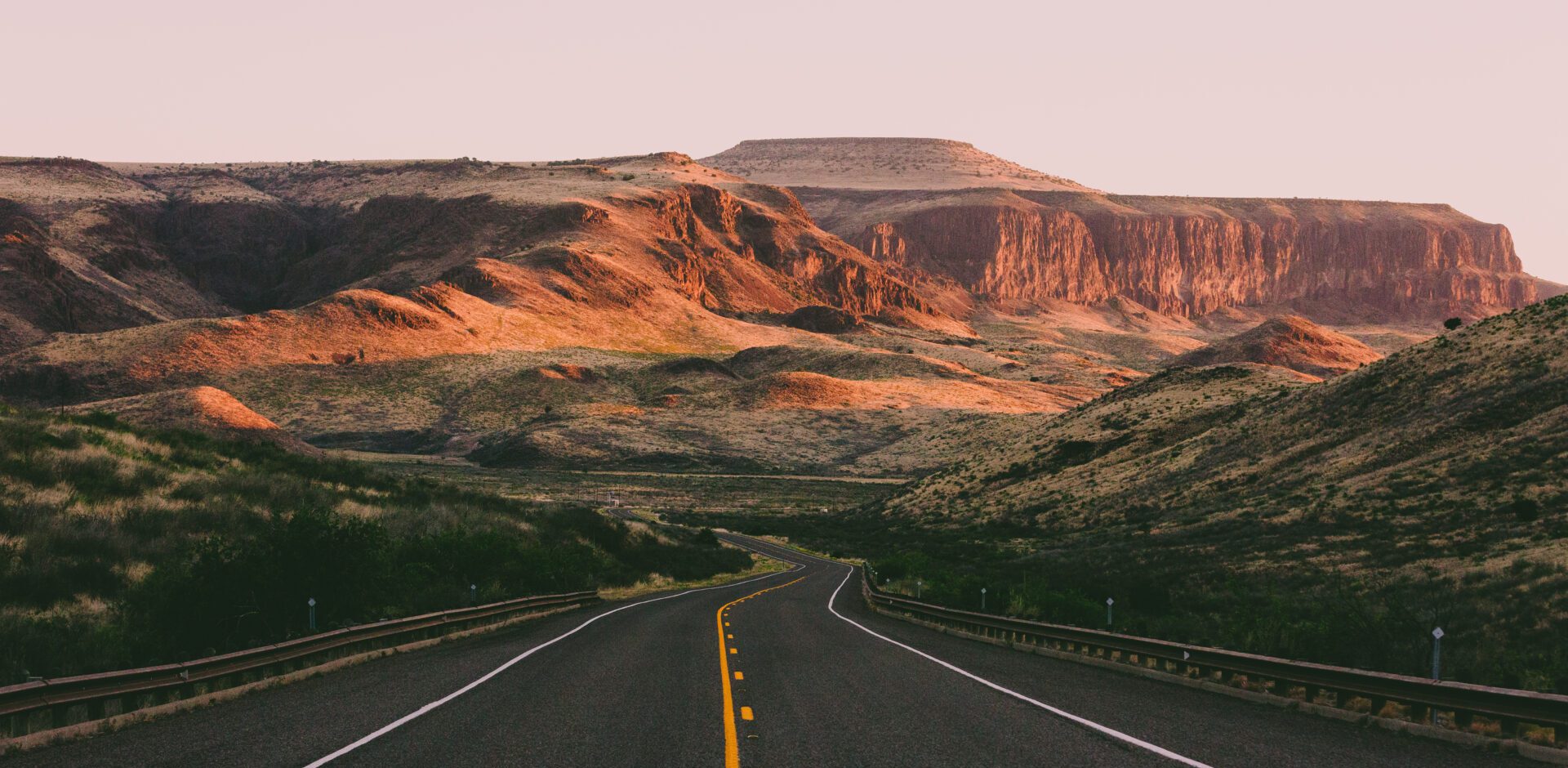How one writer’s journey through the Trans-Pecos in West Texas revealed solace in the seclusion and color beyond the monochrome
Charleston’s Rainbow Row, a stretch of 18th-century houses, each a different color, that extend as a metaphor for the rest of the pastel peninsula I call home. I arrived in El Paso only two hours before and have already found myself on a rocky planet, eons away from the East Coast. Where the copper mountains outnumber the trees—a color that is only interrupted by the gold prairie grass below and the interstate that splits through it.
West Texas and Mexico share the Chihuahuan desert where pint-sized towns only pop up every 50 miles or so and watering holes are few and far between. Through the desolation, though, retreats from the heat in the form of hotels and restaurants provide a place to pause and reflect on the landscape absorbed throughout the day.
I pan the road before me—my route is Marfa to Big Bend to Marathon—looking for a sample of the coming days, but the heat waves blur my view. So I plan to keep looking, for the rest of the week, for the pops of color and brightness that draw outdoorsmen and artists alike to the desert. Severing my last connection with any bustling resemblance of a city, I exit onto Highway 90 and my speedometer hits 80. There are 121 miles behind me, and hundreds ahead.
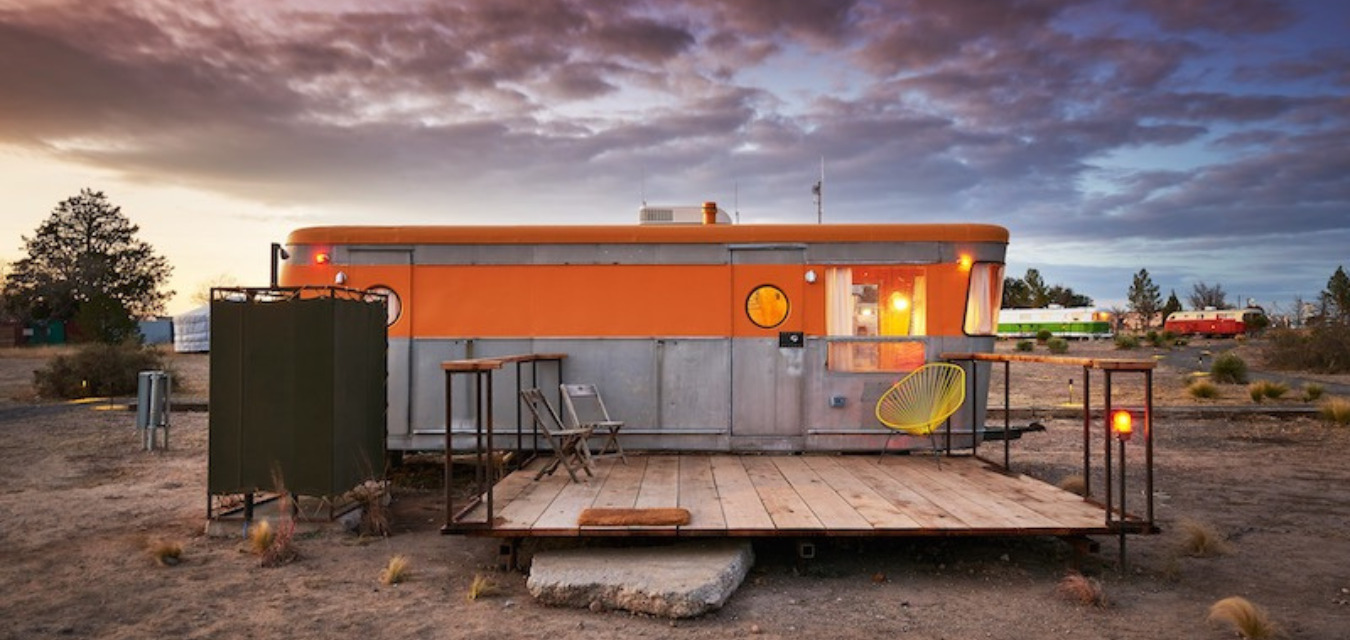
The Desert’s Collection of Artists
The first teaser of Marfa is an art installation, which is fitting for a town that formerly served as a retreat from New York for renowned artists like Donald Judd. An out-of-place, faux Prada store opposite an empty railroad provides a preview of the contemporary style of art that this far West Texas, one-stoplight township embraces.
I take a swift right at that one stoplight, which reveals El Cosmico. A trippy cluster of mid-century camping trailers reimagined with modern fixtures and bright colors attempting to battle the desert dust.
Exhausted from the drive, I check in with Angie, the pink-haired lady at the front desk, dressed head-to-toe in denim. Upon handing over my key, she makes a remark about the heat and how the trailer I’m staying in, “Princess,” is one of her favorites. And I soon realized why. Southwestern serape fabrics light up the sleeping space inside the retro Airstream. The fuchsia countertops run alongside either wall marking the way to the bathroom—a space large enough to turn around in and outfitted with two robes for wearing to the private outdoor shower set by each trailer.
“Any dinner suggestions?” I ask Angie, back in the lobby at the front of the property. “Margaret’s,” she says as I finish my last syllable.
Back at the stoplight, I check the other intersecting directions, but no one is there. Margaret’s, however, is a different story. Hipsters in wide-brim hats, ranchers in starched Wranglers, and one journalist rub shoulders outside waiting for a table at the no-reservations restaurant. The building’s face is minimal and marked solely with a neon green sign that spells the restaurant’s name in cursive. The windows are backlit, too, which causes a green glow to spill out into the street. Inside, the bar runs perpendicular to the kitchen and tickets are hung, diner-style, on a clothesline in the kitchen, pulled down when an order’s up. Besides a few evenly spaced plants and green candles, all other attention is afforded to the food.
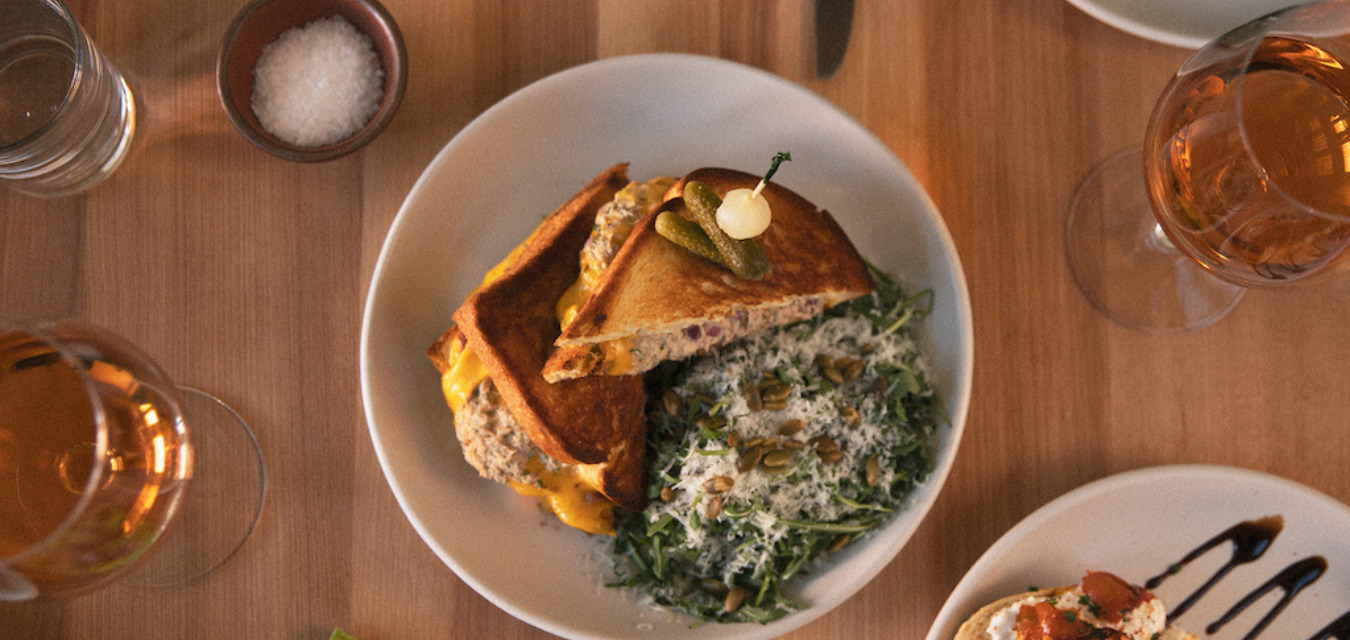
The tuna melt is a hop onto the bandwagon that circled me since entering the restaurant.
I hear it numerous times before ordering it myself: “I’ll have the tuna melt.” Some, “I’ll have the tuna melt again.” And so, I cave and punctuate the sandwich’s perfectly melted sheets of cheese and bright chunks of pickle with a side of carefully roasted cauliflower florets, generously charred, floating in a bowl of romesco. The roasted carrots, stacked on a plate and dressed with nuggets of whole roasted garlic, curds of salty cheese, and sliced jalapeño for a Western kick. Margaret’s, I gather, is much like the rest of the town, not trying to outperform but rather exist in, and elevate, the minimalist environment.
Also in town, the Sentinel serves as a bright breakfast and lunch spot where I enjoy the likes of breakfast tacos, artisanal coffee, and a selection of pastries all set below the town’s local newspaper offices. Each purchase, I learn from the barista, helps fund the newspaper and, for me, fuels another day spent in the desert.
A Drive Back In Time
A short drive along Highway 17 reveals Fort Davis National Historic Site, a former US Army outpost surrounded by natural walls formed by ancient lava rock. Today, hiking and history trails weave through restored structures. There are those once used as an infirmary, those for married and unmarried officers, the former site of the bakery, and more—all littered with what I notice are shards of colorful porcelain that visitors have placed in the windows of the once-bustling buildings.
I chose the national historic site’s North Ridge Trail for its length and the views that it promises—a 2.2-mile loop around the caps of the natural turrets surrounding the base.
Once I’m far enough from the ground, the only thing that breaks the silence is the wind that blows behind my ears and the outcry of bugle calls every half hour from the ground below. The sound marks time throughout the day—times when troops would have reported for meals or when to saddle their horses, but for me, signals another thirty minutes on the trail.
From many of the trail’s mile-high viewpoints, the main street that runs through the town of Fort Davis is visible, which is where I find myself later, perched at the soda counter of the —a local institution dating back to 1913. The all-day spot slings Texas trademarks like green chili cheeseburgers and hand-breaded chicken fried steak.
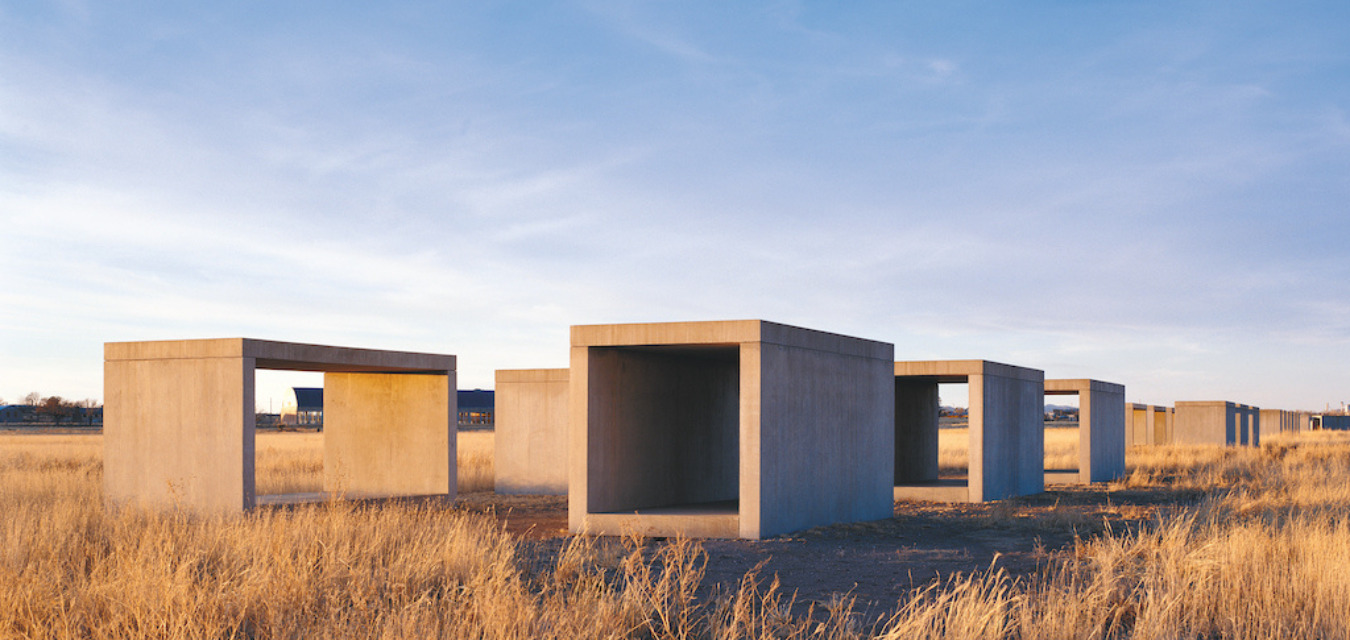
Back in Marfa, I spend an evening unwinding via a self-guided tour through the works of Donald Judd at the Chinati Foundation. The New York-based artist fled the hustle of the city in the ’70s and in turn found inspiration in Marfa’s desolation. Judd’s permanent fifteen untitled works in concrete are set within a 340-acre military-fort-turned-installation and anchor his style in minimalism. They are juxtaposed with light installations by Dan Flavin and pieces by John Wesley that represent the artist’s irreverent take on surrealism and pop movements.
I notice a couple that was at Margaret’s the previous night—this time taking photos of the works with a vintage Kodak—who later load into their 1980s Volvo station wagon, stirring dust as they seek out the next artistic relic. I follow suit and leave Marfa, sights set deeper into the desert and on a different form of art.
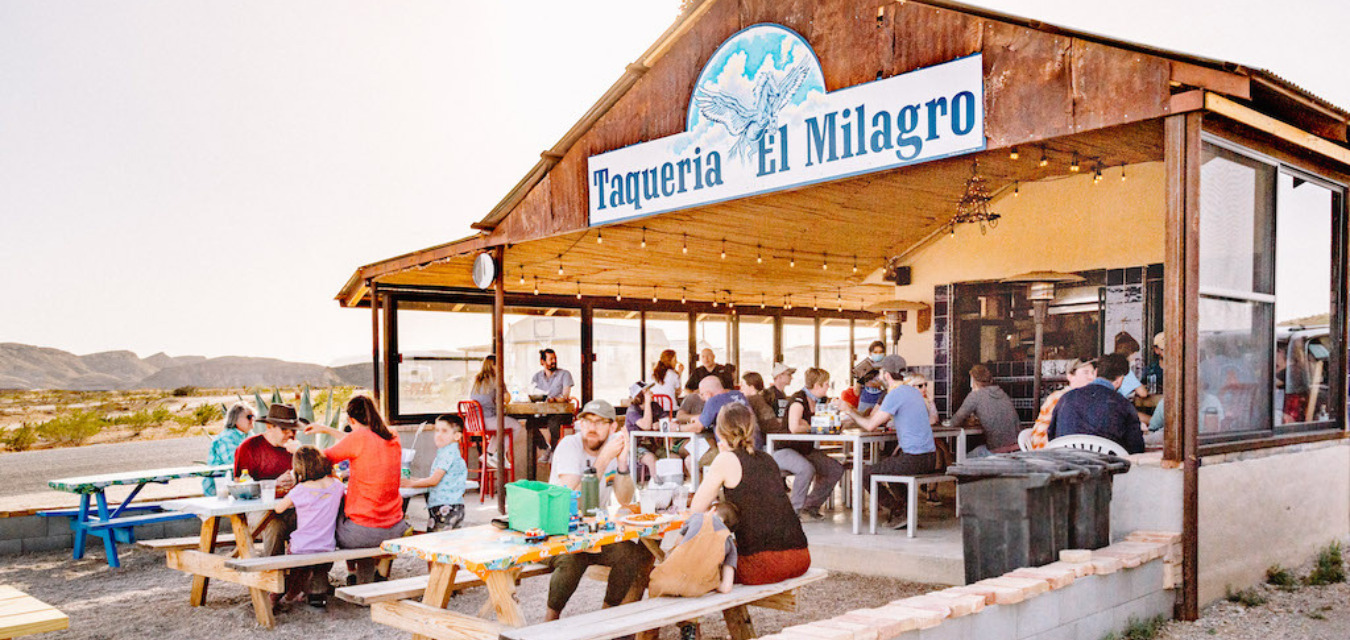
A two-hour descent on Highway 118 teases the peaks and vistas waiting in Big Bend, and while the drive is long my windshield is a silver screen of uninterrupted mountain ranges that regenerate before me as quickly as they fade behind. The peaks lead into Terlingua, a small town on the fringe of Big Bend. A stop at Taqueria el Milagro gives me a chance to stretch before the last leg of the drive and experience Mexican food just 12 miles from the border. Everything comes with a trio of housemade salsas and a pile of pickled red onions.
I soak in the no-frills setting that overlooks parts of Terlingua’s old ghost town and enjoy the flavor woven into every level of the food, from the corn tortillas to the shawarma-style chicken that is stuffed inside, before bedding down at the nearby Lajitas Golf Resort. Bordering Mexico, the resort operates as an oasis from the terrain’s conditions, an outpost for food, gear, and recuperation, and a launchpad into the park with the nearest gate only half an hour away.
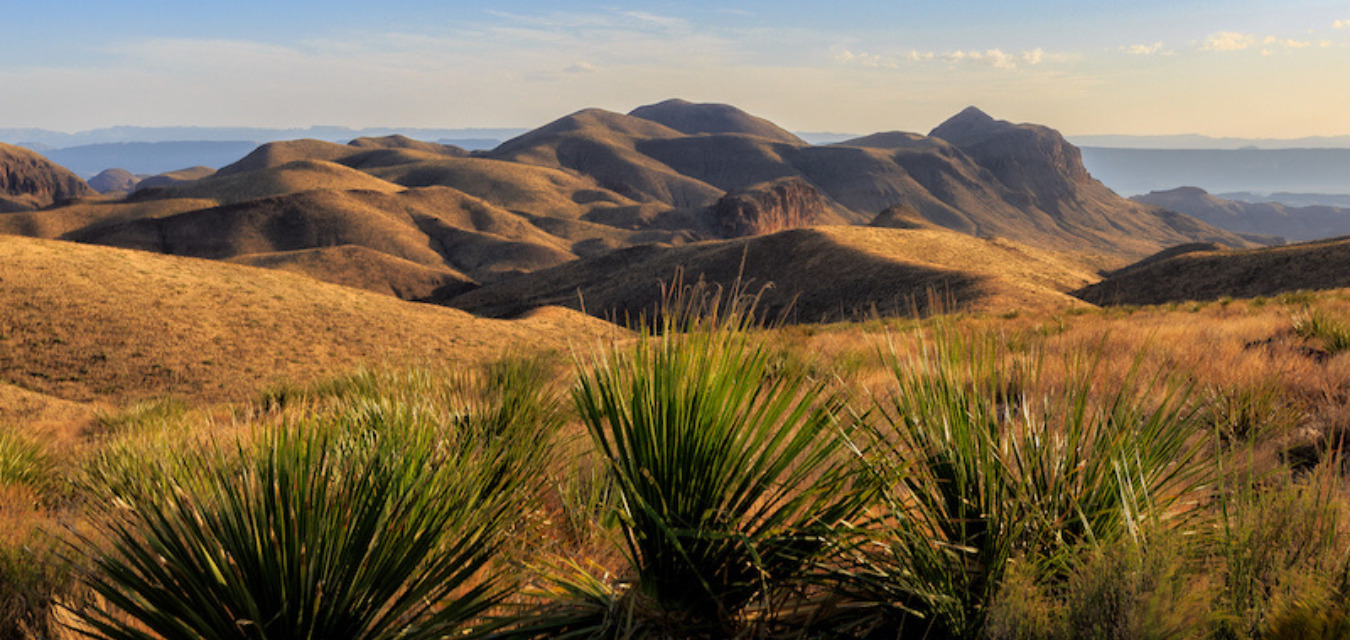
Wandering Through Big Bend National Park in West Texas
I spend the next two days exploring Big Bend National Park winding the course of the Ross Maxwell Scenic Drive and stopping at as many overlooks as my brakes and the short notice of the road’s twists allow. One last detour up the Sotol Vista reveals a birds-eye view of the 14 air miles between me and the small slit in the limestone wall that I am bound for, Santa Elena Canyon. The brief hike follows a trail of outcroppings that are packed with fossilized subaquatic organisms that once inhabited the area and lets out in the river with the canyon’s walls towering some 1,500 feet above me. Mexico is on my left and the US on my right.
“This used to all be an ocean,” a ranger named John informs me as he switches a trash bag of litter from one hand to another. The river, he tells me as we look at it below, is fed by snowmelt from Colorado. I stop at a ranger station—a short stucco building on the side of the road—to plan the rest of my day around the remaining sunlight. With an ice cream sandwich in one hand and pen in the other, I circle where I’m at on the map splayed before me and make another around a marker that reads Grapevine Springs Road, an unpaved 6.5-mile stretch that puts out at the mouth of the Grapevine Hills Trail leading to Balanced Rock.
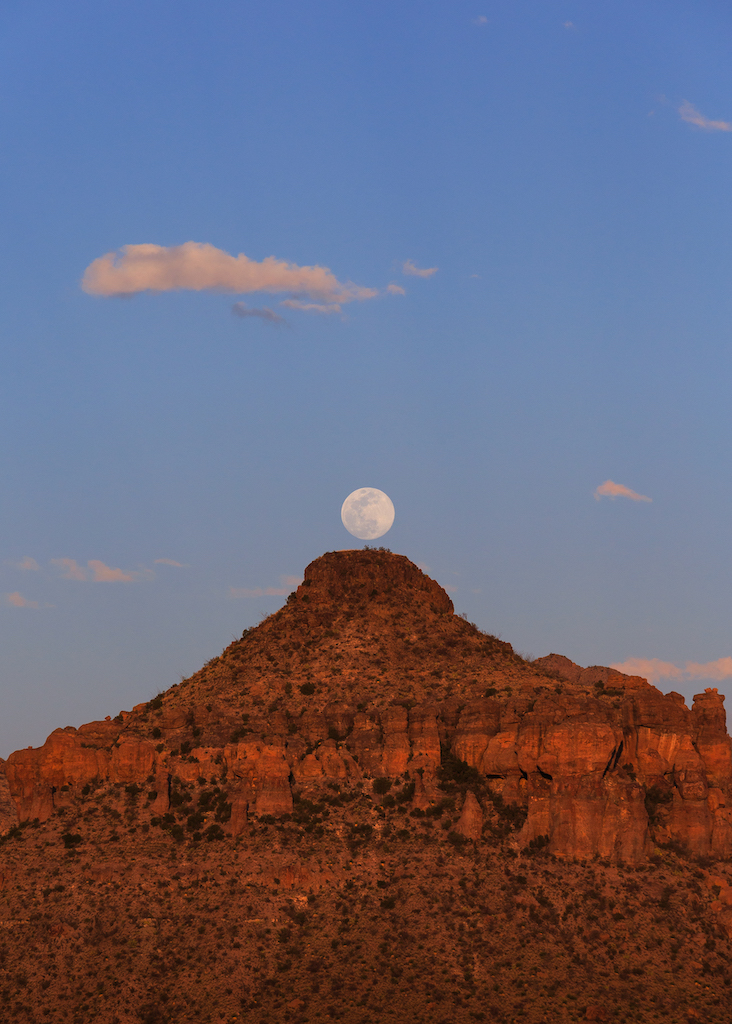
“Where did you come in at?” interjects a lady at the other end of the picnic table. “Maverick Junction,” I respond, which sets us into a conversation where I learn that she and her husband—both Canadian—have been driving around in an RV for six months visiting every state.
“Have you been to South Carolina?” I ask.
“Yes, years ago when we first retired, but I don’t remember where, just that it was flooding.”
“Then you were probably in Charleston,” I respond, realizing that we’re sitting in a landscape that was once submerged itself.
I soon learn the Balanced Rock Trail isn’t like the path leading from a paved parking lot to Santa Elena Canyon: It switches, without notice, from packed dirt to sand that gives way beneath your feet to stone. The valley through which the trail runs seems to trap the near-hundred-degree heat between the faces of rock cooking all that passes through.
After a mile of relatively flat terrain, the trail turns up the side of an unnamed range, and the end reveals a limestone boulder supported by two odd columns of rock. Through the window created by the stacked rocks there’s a view of Big Bend that is undisturbed by any sign of life, hundreds of miles of mountains, all the color of rust. I absorb the view and in turn exude all my strength in the form of sweat, before trekking back to the trailhead, kicking off my shoes, and driving barefoot back to town, where I spend one last night watching a borderline sunset from the balcony at Big Bend Holiday Hotel’s Perry Mansion.
Once home to the patron of the booming Chisos Mining Company that put Terlingua on the map, the mansion now overlooks the modern-day iteration of Terlingua, which is an outpost for people like me visiting the park. Buildings that once operated as general stores and movie theaters now serve as restaurants and gift shops among the unrestored ruins that were abandoned in the 1940s after the mercury market failed to recover through the war from the market crash of 1929.
The Mark of Colors
With the ghosts in my rearview, I spend my last day taking the long way from the Terlinguato Marathon. I cut through the park one last time, granting as much attention as I can to the mountains before turning north on Highway 385. For provisions I, along with a few other wanderers, choose a table behind the French Company Grocer after ordering from a menu scribbled on a chalk-painted fridge. The huevos rancheros fuel my exploration of all 27 acres of the Gage Hotel’s immaculate gardens before I check into one of their rustic rooms.
After days spent on the road and in the sun away from the humidity of the Lowcountry, I notice my skin has taken on a blistered terracotta tone—almost the same shade as the rocks around me—and the desert has absorbed any moisture I brought along. It’s my last night in Marathon, and with the sun setting on my errant tour I crave one more drive. At the end of a Bob Dylan song, I pull to the side of the road and look over the vista to notice the middle of the sky fading to lavender. I feel the ground, charged from the day, push heat up from below while the sun dips behind the Chisos, smearing the palette of West Texas from their peaks to the stars. There’s the color I’d been searching for.

What’s the Code?
We offer curated itineraries as part of our Special Travel Issue! Through the QR codes, you can download the itineraries from our pages directly to your device. Follow along the next time you get behind the wheel.
